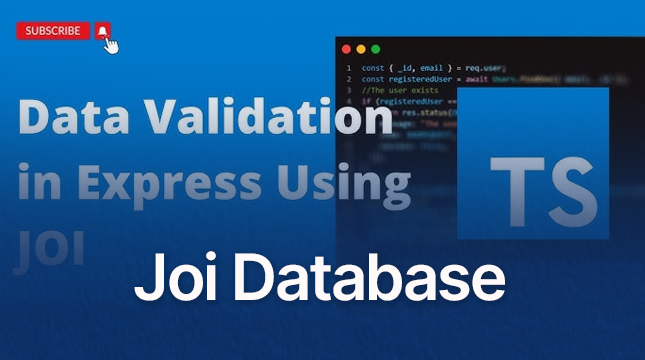This website uses cookies so that we can provide you with the best user experience possible. Cookie information is stored in your browser and performs functions such as recognising you when you return to our website and helping our team to understand which sections of the website you find most interesting and useful.
Building Scalable Web Applications With Reactjs And Nodejs
ReactJS and NodeJS are two of the most popular technologies for web app development. ReactJS is a front-end library that is used to build user interfaces, while NodeJS is a back-end JavaScript runtime environment that allows developers to build server-side applications. When used together, ReactJS and NodeJS create an ideal combination for web app development, providing developers with a powerful and flexible toolset for creating high-quality, scalable web applications.
With ReactJS, developers can create interactive and dynamic user interfaces that are fast, responsive, and easy to use. The library’s component-based architecture makes it easy to build reusable UI elements that can be used across multiple pages and applications. Additionally, ReactJS supports server-side rendering, which can improve page load times and provide better SEO optimization.
On the other hand, NodeJS is known for its scalability, performance, and flexibility, making it an ideal choice for building server-side applications. NodeJS allows developers to build real-time, scalable web applications that can handle high-traffic loads and provide a seamless user experience. Additionally, NodeJS provides a large number of modules and packages that can be used to add functionality to web applications.
When used together, ReactJS and NodeJS provide developers with a powerful and flexible toolset for building high-quality, scalable web applications. The combination allows developers to create dynamic user interfaces that can be updated in real-time, while also providing the ability to build server-side applications that can handle high traffic loads. Whether you’re building a small-scale web application or a large-scale enterprise-level application, ReactJS and NodeJS provide a powerful and flexible framework for building high-quality web applications.
Introducing Node.js
Node.js is an open-source, cross-platform, back-end JavaScript runtime environment that allows developers to build server-side applications using JavaScript. It was created by Ryan Dahl in 2009 and is built on top of the Google Chrome V8 JavaScript engine.
Node.js uses an event-driven, non-blocking I/O model, making it efficient and lightweight. This means that it can handle a large number of simultaneous connections without blocking the execution of other tasks, which is crucial for building scalable web applications.
Node.js has a rich ecosystem of modules and packages, which can be easily installed and managed using npm (Node Package Manager). This makes it easy for developers to add new functionality to their applications and reuse code written by others.
Node.js is widely used for building web servers, APIs, real-time chat applications, streaming services, and many other types of server-side applications. It has gained popularity in recent years because of its ability to handle large-scale, high-traffic applications and its compatibility with modern web technologies such as WebSocket and WebRTC.
Advantages:
- Node.js is highly performant and efficient due to its non-blocking I/O model.
- Its use of JavaScript makes it easy to learn and use.
- The rich ecosystem of modules and packages makes it easy to add functionality and reuse code.
- It’s highly scalable and can handle large-scale, high-traffic applications.
- It’s well-suited for building real-time applications like chat and online games.
- The active community of developers ensures that Node.js is constantly evolving and improving.
Here are the key features of Node.js:
- An asynchronous and event-driven programming model
- Fast and scalable
- Single-threaded but supports concurrency
- JavaScript-based, making it easy to learn and use
- A large and active ecosystem of packages and modules through NPM (Node Package Manager)
- Well-suited for real-time applications and microservices architecture
- Cross-platform and open-source
Introducing React Js.
ReactJS is a popular open-source JavaScript library used for building user interfaces (UIs). It was developed by Facebook and released in 2013.
ReactJS allows developers to create reusable UI components and build large, complex web applications that are fast and responsive. It uses a declarative approach to programming, meaning that developers describe how the UI should look and behave, and ReactJS takes care of the rest.
One of the key features of ReactJS is its virtual DOM (Document Object Model). The virtual DOM is a lightweight representation of the actual DOM, and it allows ReactJS to update the UI efficiently without re-rendering the entire page. This makes ReactJS fast and efficient, even for complex applications.
ReactJS is also highly modular and flexible. Developers can use ReactJS with other libraries and frameworks, and it works well with both server-side and client-side rendering.
ReactJS has a large and active community of developers, which has resulted in a rich ecosystem of tools, libraries, and resources. This makes it easy for developers to get started with ReactJS and find solutions to common problems.
Overall, ReactJS is a powerful and flexible library that allows developers to build fast and responsive user interfaces for web applications.
Advantages:
Here are some key advantages of ReactJS:
- Component-based architecture
- Virtual DOM
- Easy to learn and use
- Large and active community
- High performance and efficiency
- SEO-friendly when used with server-side rendering
Here are some key features of ReactJS:
- Component-Based Architecture
- Virtual DOM
- JSX
- One-Way Data Binding
- Performance
- React Native
I hope that helps!
What Is The Benefit Of Combining Node.Js And React.Js For Web App Development?
There are several reasons why using the combination of Node.js and React for web app development can be advantageous:
Full-stack JavaScript Development:
Node.js and React are both based on JavaScript, which means that developers can use a single language and set of tools for both front-end and back-end development. This can streamline the development process and increase code reusability.
Scalability:
Both Node.js and React are designed to be highly scalable, which means that they can handle large volumes of traffic and data. Node.js can handle multiple requests simultaneously, while React’s virtual DOM enables the efficient rendering of large data sets.
Performance:
Node.js and React are both known for their high performance and efficiency. Node.js uses a non-blocking I/O model, which makes it faster and more efficient than traditional server-side technologies. React’s virtual DOM and efficient rendering system enables fast and smooth user interfaces.
Large and Active Communities:
Both Node.js and React have large and active communities, which means that there are plenty of resources, libraries, and tools available. This can make development faster, easier, and more efficient.
Easy Integration:
Node.js and React can be easily integrated with other technologies and frameworks, which can make it easier to build complex applications. For example, Node.js can be used with databases like MongoDB, while React can be used with other front-end libraries and frameworks.
Overall, using the combination of Node.js and React for web app development can offer several advantages, including full-stack JavaScript development, scalability, performance, large and active communities, and easy integration with other technologies.
Conclusion,
In conclusion, building scalable web applications with React.js and Node.js can provide businesses with several advantages. By combining the front-end power of ReactJS with the back-end capabilities of Node.js, businesses can develop high-performance, scalable, and flexible web applications that can easily adapt to changing market demands. ReactJS provides a component-based architecture, virtual DOM, and an efficient rendering system, while Node.js offers non-blocking I/O and scalability for handling large volumes of traffic and data. This powerful combination enables businesses to deliver fast and responsive user experiences, handle high traffic volumes and easily integrate with other technologies and frameworks. Overall, building scalable web applications with ReactJS and Node.js can provide businesses with the tools they need to succeed in today’s competitive digital landscape.
Get the help you need in developing from skillful developers of Netizens Technologies to build you the best web applications.

Let's Start Your Project
Get free consultation for your digital product idea to turn it into reality!
Get Started






